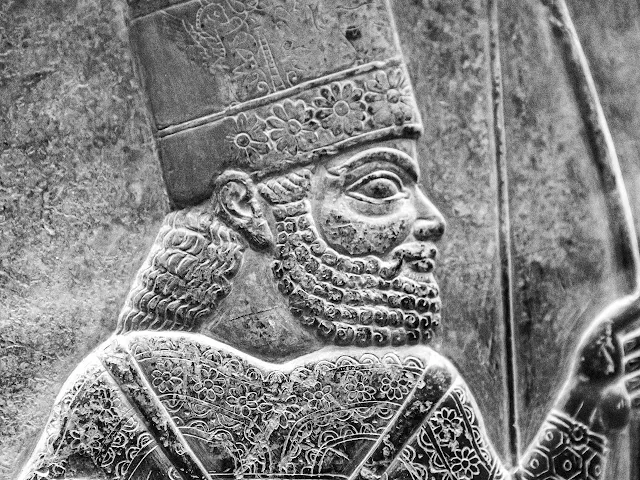
Marduk is a male deity in ancient Mesopotamian myths especially Babylonian mythology.
He is also the city god of Babylon and the Babylonian state god.
He later replaced Enlil as the leader of the gods.
To learn more about the famous god Enlil in Mesopotamian myths,
Enlil: The Sumerian God of Air and Storm
The god Enlil is one of the most important and well-known deities in ancient Mesopotamian mythology. Here is a thorough description of such Enlil!
Please read this article.
As one of the chief deities of the Babylonian religion, Marduk played an important role in shaping their culture.
In this article, we will look at Marduk and the famous myths about him.
Keep reading to learn more about this Marduk god!
Who is Marduk?
Marduk was only the city god of Babylon.
It was due to the rise of Babylon and the birth of the Babylonian dynasty that he was able to take his place as the chief deity of the pantheon (all gods).
Hammurabi brought Babylonia, which had been in a state of chaos for a time, under control and unified the region.
As he set about strengthening state authority and security, the Babylonian city god Marduk became the main deity.

Kingship to rule the earth is lent by the gods.
The ancient Mesopotamian belief of the time that "the king who rules the earth is lent by the gods" made it very important for a patron god to increase his power in order to establish control over the country.
The Code of Hammurabi states below.
Marduk was transferred power from Anu and Enlil
Characteristics of Marduk
Most of the gods in Mesopotamian myths are anthropomorphized, but Marduk was not limited to this, and his appearance was different.
Marduk's appearance is characterized by the following features:
- Four eyes and ears (or two heads)
- When his lips move, he breathes fire
- Tallest of the gods
- Both arms and legs are long
However, in the surviving iconography, he is depicted as a crowned and bearded man.
The Myth of Marduk
The myth that best represents Marduk's heroic divinity is the famous Babylonian creation myth, Enuma Elish.
It describes Marduk's heroic exploits and his rise to supreme deity.
Marduk, son of Air
Since the children born one after another by Tiamat, the mother primordial goddess, made a noisy commotion,

I will kill those noisy ones...!
Tiamat's husband Apsu tried to kill them.
However, Apus was defeated by the schemes of one of his sons, Air.
The child born to Air, the father's murderer, was Marduk.
Tiamat vs. Marduk

My dear son Kingu Avenge your father!
Tiamat gave her son (or one of her husbands) Kingu a clay tablet of heavenly life with "the personal information of all living things" on it.
She also appointed Kingu as commander of the eleven monsters.
She then challenged the young gods, her own children, to battle.
On the side of the young gods, Marduk, appointed by Enlil, took the lead.
With overwhelming force, he defeated Tiamat and the others, and won the victory by taking the clay tablet of heavenly destiny from Kingu.
The Loser and the Victor's End
The defeated Tiamat was torn apart and became the foundation of the creation of heaven and earth, and Kingu was executed by Air, and his blood was used as material for the creation of mankind.
Having thus established the order of heaven and earth, Marduk replaced Enlil as king of the gods.
He was given 50 titles and was called "Enlil of the Gods (Supreme God)".
To learn more about the mother primordial goddess Tiamat, see
Tiamat: A Guide to the Goddess You Need to Know
Who the heck is this "Tiamat" we hear so much about in the game? If you think so, this may be an informative article for you.
Read the article here.
Later life of Marduk
A change from the heroic exploits of Marduk as conveyed in the Enuma Elish, the Myth of Elah teaches a different literary style.
In this myth, Marduk is portrayed as a fallen ruler approaching old age, without a trace of the brilliance of his youth.
He was tricked by Nergal into handing over his power as ruler, and was too afraid to enter his own blood-stained temple.
The god Nergal, who tricked Marduk, has a great love affair with Ereshkigal.
To learn more about the episode of Nergal and Ereshkigal's great love affair,
What Is The Love Story Behind Nergal and Ereshkigal?
Nergal & Ereshkigal, the most powerful couple in Mesopotamian mythology. If you are curious about such the cartoonish love story, read this article!
Please read this article.

Post a Comment